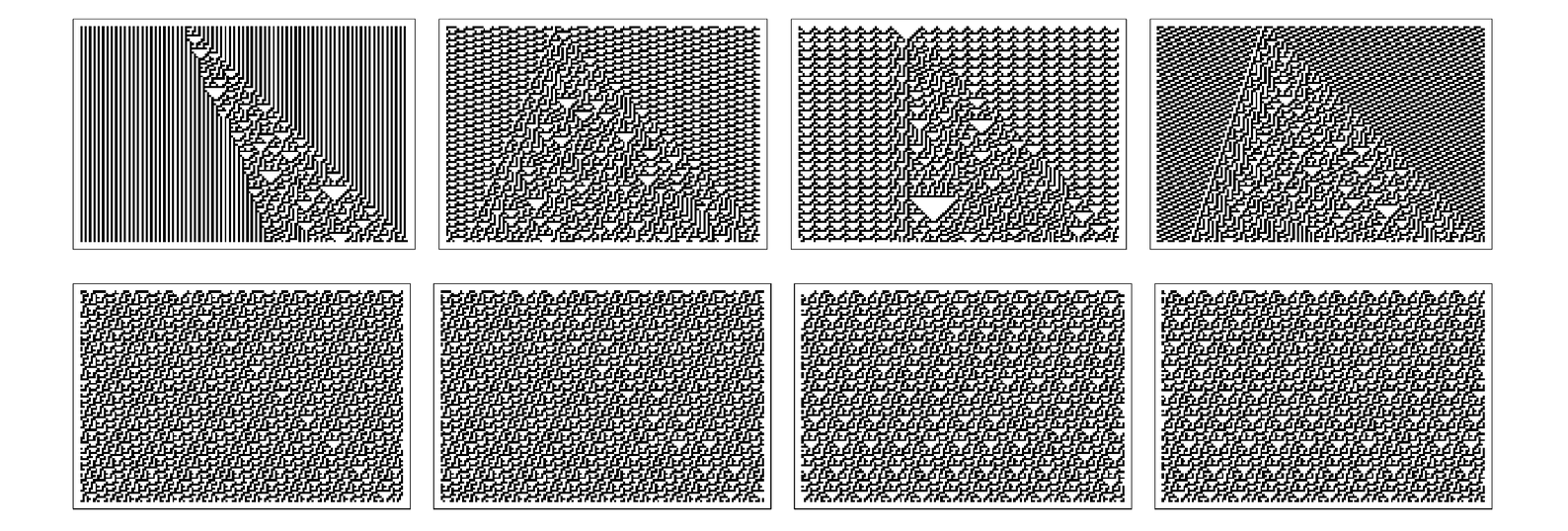So what about a case like rule 30? With strictly repetitive initial conditions—like any cellular automaton—this must yield purely repetitive behavior. But as soon as one perturbs such initial conditions, one normally seems to get only complicated and seemingly random behavior, as in the top row of pictures in the second image.
Yet it turns out still to be possible to get localized structures—as the bottom row of pictures in the second image demonstrate. But these structures

Examples of localized structures in rule 73. Note that in the last case shown, the background patterns on either side are mirror images.

Examples of patterns produced by rule 30 with repetitive backgrounds. The top row shows the effect of inserting a single extra black cell into various backgrounds. The bottom row shows all localized structures involving up to 25 cells supported by rule 30 on repetitive backgrounds with blocks of up to 25 cells. Note that these localized structures always move one cell to the right at each step—making it impossible for them to interact in non-trivial ways.



